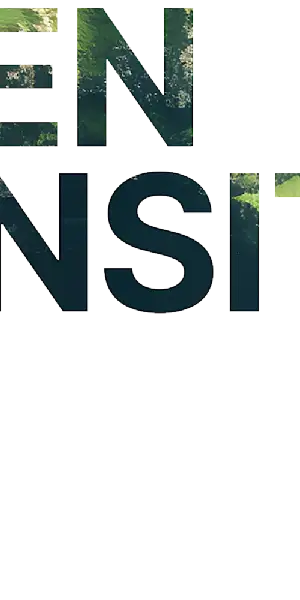Understand CII

A question & answer walkthrough of the upcoming regulations
Next year will see yet another addition to the list of environmental regulations facing the shipping industry: CII, which aims to support the IMO’s longer-term objective of reducing the carbon intensity of international shipping by 40% by 2030 when compared to 2008 levels.

A guide to what you need to know about CII
Why acting today on Carbon Intensity Indicator regulation will benefit you today.
Next year will see yet another addition to the list of environmental regulations facing the shipping industry: the Carbon Intensity Indicator (CII), which aims to support the IMO’s longer-term objective of reducing the carbon intensity of international shipping by 40% by 2030 when compared to 2008 levels.
In our in-depth article covering this new regulation, ZeroNorth’s experts Plamen Zarifov, Head of Vessel Optimisation Services, and Marcho Markov, Director of Engineering, will explore how CII is calculated, what it means for your operations and, critically, some of the solutions that you can use to enable compliance and CII progress on your own vessels and fleets.
What is CII and when should I act?
The Carbon Intensity Indicator measures how efficiently a vessel transports goods or passengers, taking the form of an annual rating system ranging from A to E, not unlike domestic appliances. These rating thresholds will become increasingly stringent towards the end of the decade, in support of the IMO’s goals. CII is expected to enter into force on 1 November 2022, with certification and reporting requirements beginning 1 January 2023. So, there’s not much time to act!
The IMO is also developing correction factors that will further hone CII calculation. CII is important both from a compliance perspective but also because it will require changes to the way the industry operates. That’s why it’s better to get ahead of the curve and plan today for the changes you’ll have to make this year.
What does CII mean for shipping companies’ daily operations, and why should the industry pay attention to it?
At the simplest level, CII means that every vessel will need an enhanced Ship Energy Efficiency Management Plan (SEEMP), which will need to be approved and kept onboard the vessel. It should include information on the methodology used to calculate CII, what a vessel’s target is for the next 3 years, and most importantly, a plan of attack for improving the rating.
As shipping becomes increasingly influenced by charterers, shippers, institutions, and consumers seeking to meet decarbonisation targets, the reality is that vessels with a low CII rating will soon cease to be commercially attractive.
It’s easy to see how this could be impactful.
“Those rated E in 2023 are required to submit a corrective action plan that will set out the steps needed to improve their rating. In any case charterers may well decide that they will only charter ships rated A-C. If that is the case, those ships rated E in 2023 face having to make improvements of at least 19% for tankers, and at least 12% for container ships and bulk carriers.”
— Splash 24/7,
How will CII cause the industry to change?
Once each vessel has their A to E CII rating, the work begins. C is the minimum rating to be considered compliant, but the whole value chain is encouraged and expected to provide incentives for higher performing vessels. A ship rated D for three consecutive years or rated E whatsoever must submit a corrective action plan to reach the minimum C rating for compliance.
This means there will be a huge disincentive to operate lower CII rated vessels or, to put things another way, an incentive to improve environmental performance.
Why is it critical to act today?
It’s important to remember that, beyond its status as a new regulation and compliance requirement, CII effectively impacts a shipping company’s ability to remain competitive and present an attractive commercial proposition to their existing and new customers.
With the rating thresholds only set to become increasingly stringent towards 2030, waiting until it’s too late or doing nothing is not an option if owners and operators want their vessels to remain commercially viable.
What methods, solutions and strategies can help me ensure CII compliance?
Improving voyage planning, installing clean technologies, improving the condition of the vessel and many more strategies can help. A little later, we’ll explain how ZeroNorth’s CII solution can help.
ZeroNorth recently launched an industry-first CII analytics and optimisation service to help shipping companies navigate this issue. How is the service allowing them to gain a competitive edge from CII?
We launched our industry-first CII analytics and optimisation solution in December 2021 to help shipping companies navigate these new regulations, and of course in support of our mission to make global trade green.
A recent update saw us directly integrate CII analytics and optimisation into the ZeroNorth platform. This gives our customers easy access to a real opportunity to optimise their operations, fuel consumption and emissions even further and in line with CII requirements.
Shipping companies can gain a competitive edge by accessing real-time forecasting of CII-related performance and simulate their vessels and fleets’ future CII rating. The platform will also recommend alternative voyage routing options that balance commercial needs and carbon emissions to improve - or maintain - a vessel’s CII rating.
Customers can also get access to calculations of the CII rating for both the year-to-date and year-by-year performance. Importantly, if a vessel is at risk of becoming non-compliant in the future the Zeronorth platform proactively flags this and alerts the operators and managers.
For more visit our CII product page.
Why is Zeronorth CII optimisation a must-have for operators and managers?
The Zeronorth platform creates transparency and unlocks voyage optimisation insights to analyse, forecast, and proactively improve a fleet’s CII performance.
Customisable CII goals, help operators to track progress and reach full potential of each vessel.
CII optimisation service value is that it helps ship operators to visualise the best routing option from a commercial perspective while keeping the effect on their vessel’s CII rating in mind.
This will play a crucial role in helping shipping companies to achieve the optimal balance between commerciality and reduction of emissions.
Is your software future-proofed against tightening regulation?
Simply, yes. The beauty of the software is that it can be adaptable to factor in these future requirements. CII thresholds will tighten through to the end of the decade and that is why solutions that can enable better CII performance are critical to begin today.